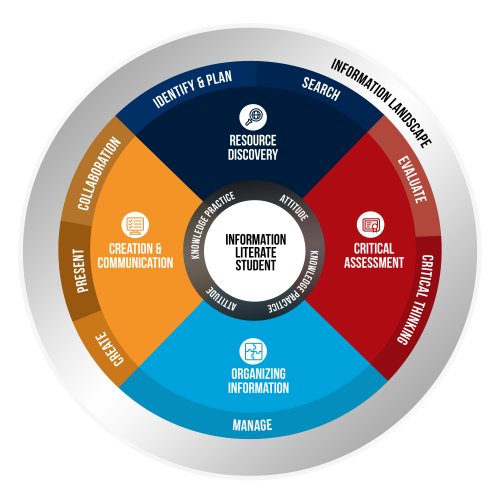Information-Wise: UM Information Literacy Framework
What is Maastricht University’s vision of information literacy education? Read this blog post on the UM information literacy framework to find out.
Why do we need a framework for information literacy education?
In general, frameworks multiply the chances to improve information literacy education. They can enrich the conversations with faculty staff about rethinking the teaching of information literacy. In addition, frameworks provide a platform to inform instructional goals and objectives. In the US, the ACRL framework is widely used, while in the UK, university libraries promote the SCONUL and Research development framework. In the Netherlands, all three frameworks find commendation.
At the beginning of the project, we identified that a common understanding and strategic direction for information literacy education is missing. A co-creative process lead then to the development of a UM information literacy framework which rolls out our vision for an information literate bachelor student at our university. This framework entails four dimensions that embrace the PBL approach to education, i.e. learning should be constructive, contextual, collaborative and self-directed.

The use of the word ‘information’ implies a variety of formats and sources, including data.
1. Resource Discovery
2. Critical Assessment
3. Organizing Information
4. Creation & Communication.
Resource Discovery
Resource discovery is about identifying and finding the information sources you need. This is about defining your information need, conducting basic and advanced searches of literature and data sources and using academic databases. Discovering resources also includes the evaluation of your search outcomes and refining your search strategy.
Critical Assessment
Critical assessment is about developing the skills and attitudes to evaluate the sources that you find. It consists of critical thinking about, evaluation, and critical reading of information. Assessing sources is also about recognising and reflecting on the author’s and your own biases.
Organizing information
Organizing information is about developing strategies (e.g. concept mapping) and using tools (e.g. reference manager) for managing information of all kinds. It is also about appropriate referencing and valuing the ethical and legal aspects of sources.
Creation and Communication
Creation & Communication is about the creation, presentation, and communication of information. It includes the creation of public and academic information as well as its presentation in different formats (e.g. infographics) to different audiences (e.g. students). In addition, this dimension comprises of different rules and techniques to effectively and ethically collaborate and communicate in online spaces.
- Author: Jaro Pichel, Educational specialist and project leader UM Library / EDLAB
![]()
This article is licensed under a Creative Commons Attribution 4.0 International (CC BY 4.0) License.
[et_bloom_inline optin_id=”optin_3″]

Library update
Related
More information about the framework vision and content is available in the midterm report.
Last updated: 27/08/20

0 Comments